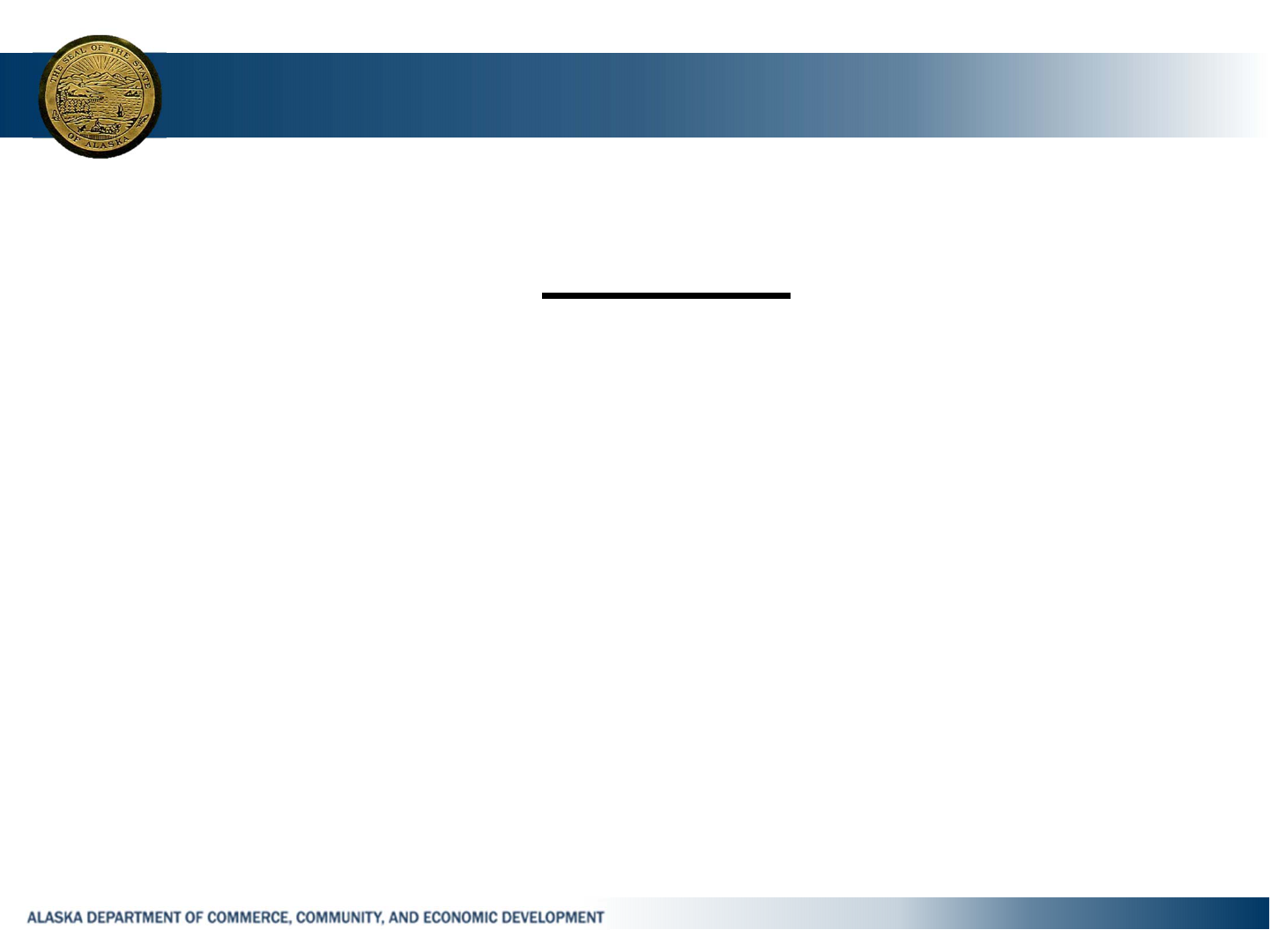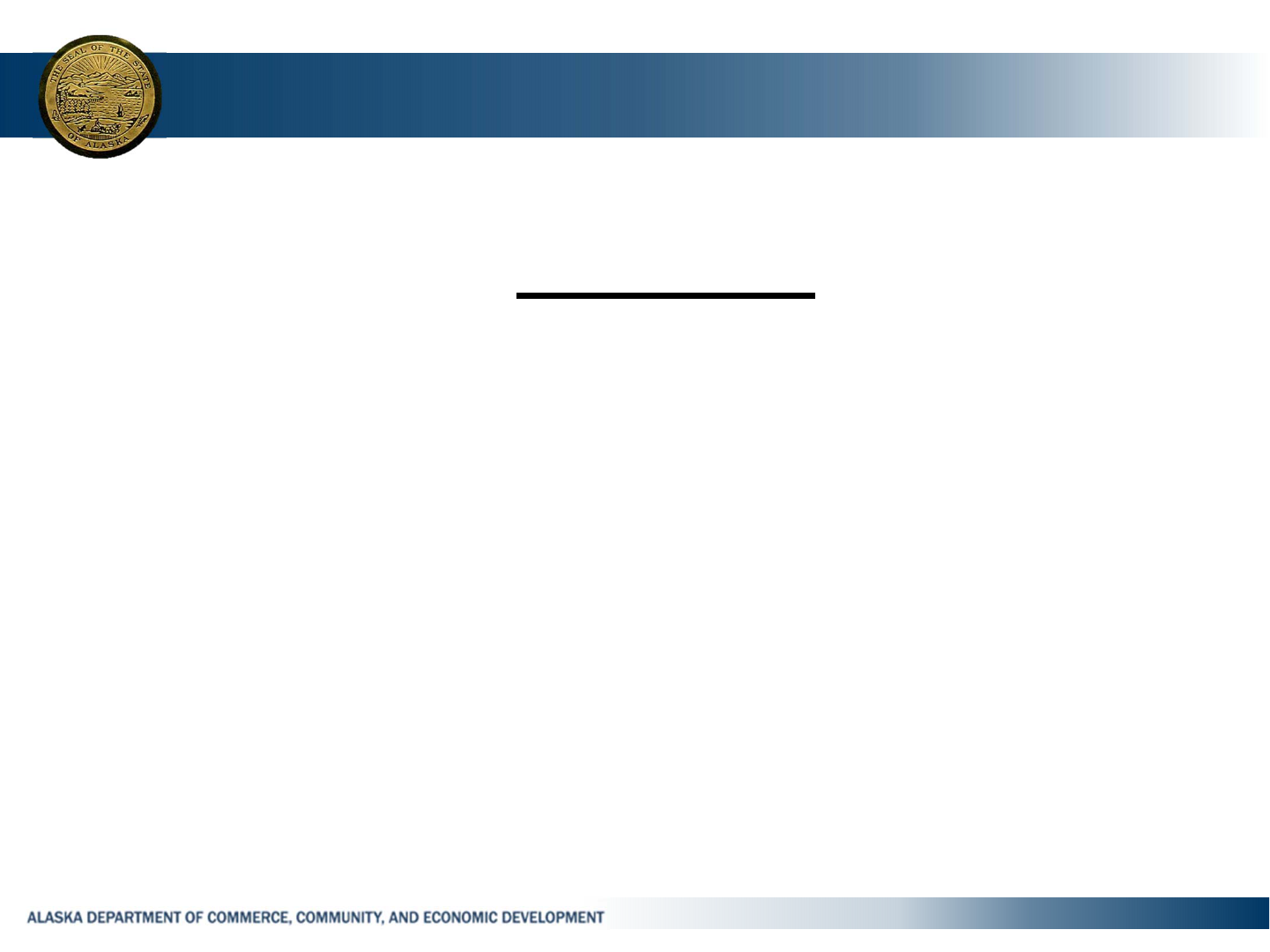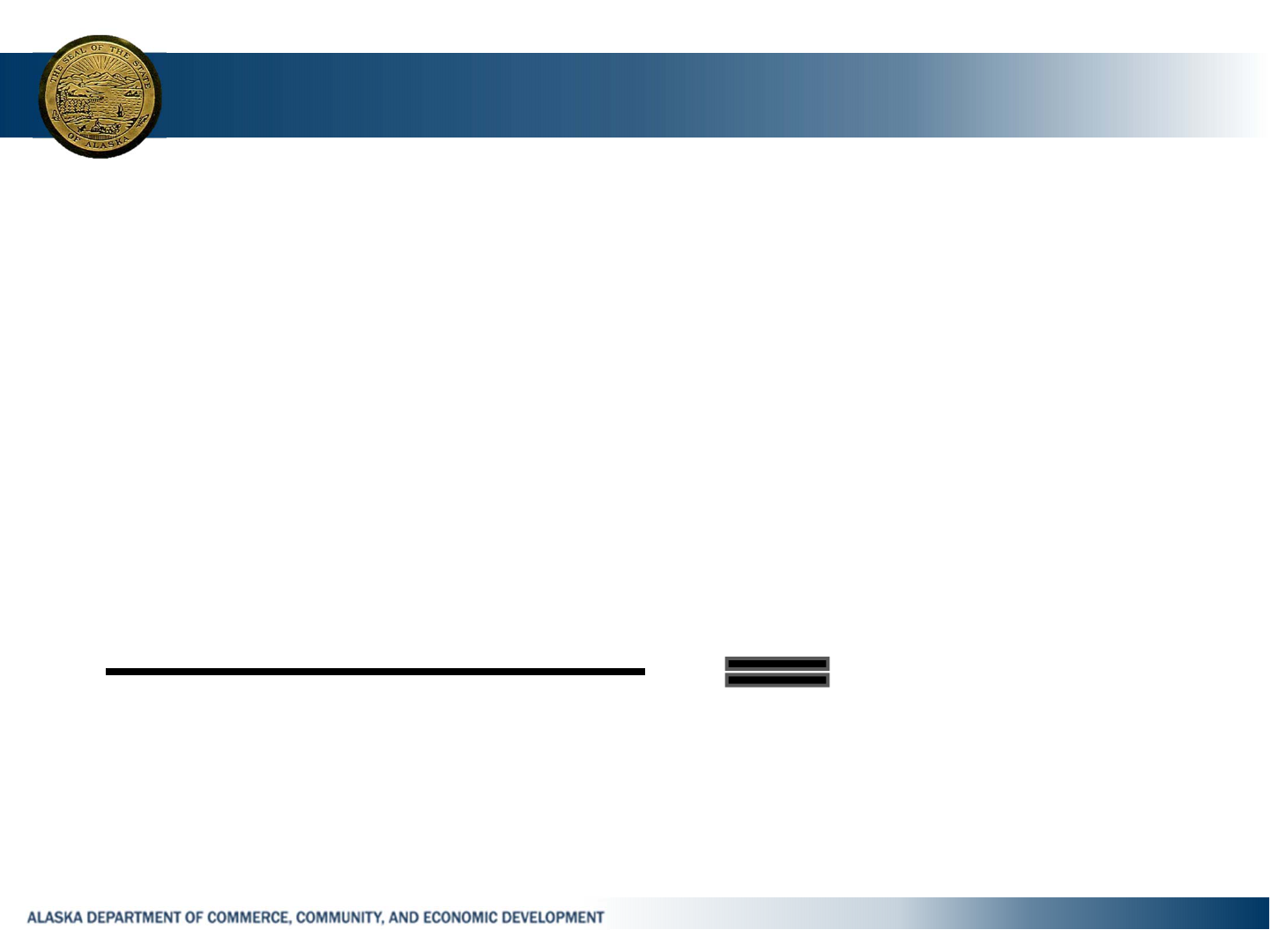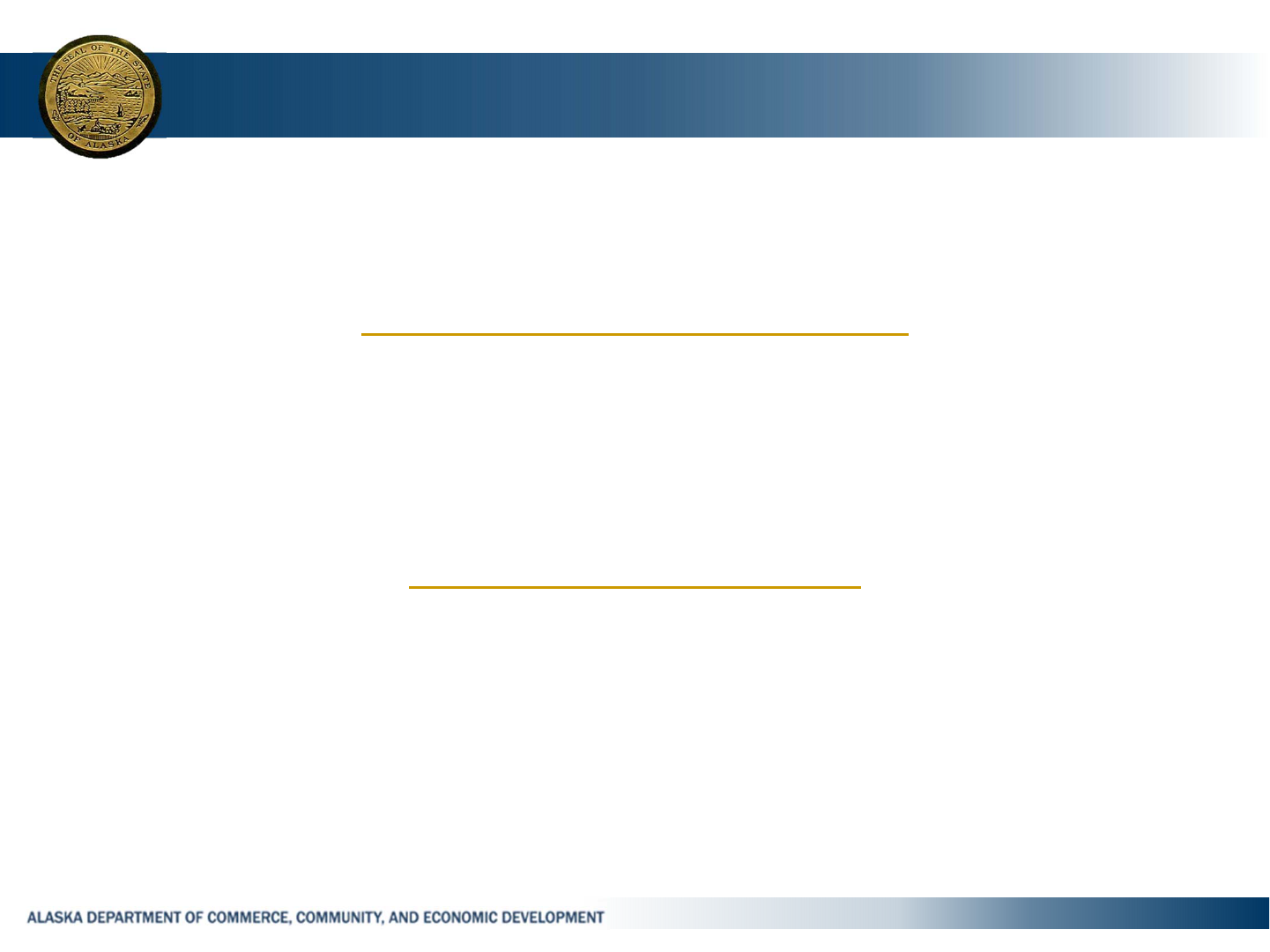
OFFICE OF THE STATE ASSESSOR
DEPARTMENT OF COMMERCE, COMMUNITY
AND ECONOMIC DEVELOPMENT
Property Taxation 101 – The Basics
Or…..
How does this thing really work?
January 25, 2016

PropertyTax101
PartI–CalculatingYourPropertyTaxBillPg.4
PartII– DeterminingtheTaxRatePg.11
PartIII–WhatAboutExemptions?Pg.31
PartIV– CappingtheMillageRatePg.47
StateAssessor
2

Thefollowingpresentationandcontentare
intendedtoillustratethefundamental
basicsofthepropertytaxsystem.Assuch,
thisisa“barebones”exampleprovidedto
illustratefundamentalmathematicsofthe
propertytaxes.Inpractice,property
taxationandbudgetingaremorecomplex
andincludemanymorecomplextopicsthat
are
notcoveredordiscussedhere.
StateAssessor
3

PARTI
CALCULATING
YOUR
PROPERTYTAXBILL!!
StateAssessor
4

PropertyTaxesarebaseduponarelatively
simpleequation.
AssessedValueXMillageRate=TaxBill
Theonlyinformationneededtocalculateyour
propertytaxbillaresomedefinitionsforthree
terms;AppraisedValue,AssessedValueand
MillageRate.
StateAssessor
5

AppraisedValue
Thisisthemarketvalueofyourpropertyas
determinedbythelocalassessor.Theappraised
valueofyourpropertyvariesasthemarketfor
realestatefluctuates.Ifmarketvaluesdecrease,
appraisedvalueswilldecreaseandifmarket
valuesincreaseyourappraisedvaluewill
increase.Ultimately,theappraisedvalueofyour
propertyisafunctionoftransactionsofreal
estateinthelocalmarket.
StateAssessor
6

AssessedValue
Thisisthetaxablevalueofyourproperty.
Thiswilloftendifferfromtheappraisedor
“marketvalue”ofapropertydueto
exemptions.Forexample,theappraised
valueofapropertymaybe$200,000,butif
thepropertyis10%exempt,theassessed
valuewouldonlybe$180,000.Propertytax es
arecalculatedontheassessedvalue,notthe
appraisedvalue.
StateAssessor
7

MillageRate
Thetaxratethatisappliedtotheassessed
value.Themillagerateor“millrate”isusually
anexpressionofdollarsoftaxleviedperevery
$1,000ofvalue.Soamillagerateof12.5
wouldmeanthatforevery$1,000ofassessed
value,thetaxpa yerwouldpay$12.50in
tax.A
millrateof12.5canalsobeex pressedas
1.25%or0.0125indecimalform.
StateAssessor
8

CalculatingtheTaxBill
Sowhatwouldthetaxbillbefora
propertywithanappraised valueof
$200,000,anexemptionof10%anda
millagerateof12.5?
StateAssessor
9

TheTaxBill
AppraisedValue:$200,000
‐ 10%Exemption:‐$20,000
AssessedValue:$180,000
XMillageRate0.0125
=PropertyTaxBill$2,250
StateAssessor
10

PARTII
DETERMINING
THE
TAXRATE!
StateAssessor
11

TheTaxRateisdeterminedduringthebudget
processofthelocaltaxingauthority.In
Alaska,thiswillbeyourboroughandorcity.
Eachyearyourcommunitywillsetabudget
thatdetailstheexpenditurestheywillmake
andthesourcesofrevenuethatwillbe
collectedandusedto
fundthatbudget.A
currentexampleoftherevenuesourcesfora
majorAlaskacommunityfollows.
StateAssessor
12

StateAssessor
13
STATE &
FEDERAL 25%
PROPERTY TAX
15%
SALES TAX
14%
OTHER TAXES
2%
CHARGES FOR
SERVICES
37%
OTHER & MISC
7%
REVENUESBYSOURCE

Thesourcesofrevenuevaryfrom
communitytocommunityforvarious
reasons.Forexample,somecommunities
haveasalestaxandsomedonot.Others
mayhaveoilandgaspropertiesandsome
donot.Somemayreceivefishtax esor
obtainsubstantialrevenuefromtourism
relatedbusinesses.However,forthis
presentationwewillusetherevenue“mix”
providedhere,withpropertytaxessetat
15%oftherevenuescollected.
StateAssessor
14

Now,justforpurposesofexample,let’s
createanewcommunityandtheirbudget.
Let’scallit……
ALASKAVILLE!
StateAssessor
15

State & Federal
$2,500,000
25%
Property Tax
$1,500,000
15%
Sales Tax
$1,400,000
14%
Other Taxes
$200,000
2%
Charges for
Services $3,700,000
37%
Other & Misc.
$700,000
7%
ALASKAVILLEREVENUESBY
SOURCE
StateAssessor
16

Alaskaville hasjustcompletedit’s
budget.Totalexpendituresinthebudget
aresetat$10,000,000forthefiscalyear.
Ofthisamount,cityofficialsestimate
thattheywillreceive$8,500,000in
revenues fromvarioussourcesand
$1,500,000or15%ofthetotalbudget
willcomefromlocalpropertytax es.
StateAssessor
17

Notethatthisisafairlytypicalanalysis.Local
officialshavelimitedcontrolovermanysources
ofrevenuesuchassalestaxorfederalandstate
money.Theamountoflocalsalestaxdepends
onconsumerpurchases.Federal&statefunding
isdecidedbyfederalandstateofficials.While
thesesources
canbeestimated,theycannotbe
fixed.Onlytheamountofthepropertytaxis
trulyunderlocalcontrol.So,thepropertytaxis
oftenusedasthefinalbuildingblocktoclose
andbalancethebudget.
StateAssessor
18

What’stheMillageRate?
Asnotedearlier,Alaskaville hassetits
budgetat$10,000,000.Tofundand
balancethisbudget,theyhave
dedicated$1,500,000inproperty
tax es.Thisiscommonlyreferredtoas
thePropertyTaxLevy.
StateAssessor
19

So,thequestionis….
Whattaxratemust
Alaskaville settocollect
$1,500,000inproperty
taxes?
StateAssessor
20

StateAssessor
21
To answer this question one must
know the basic formula for
calculating property tax rates.
Property Tax Levy
Property Tax Base
Millage
Rate

StateAssessor
22
We’ve already discussed the Property Tax
Levy, but what is the Property Tax Base?
Property Tax Base: The sum of all
Assessed Values in the jurisdiction.
And we must remember, that Assessed
Values are used, not the Appraised Values
which can be substantially different.

StateAssessor
23
And now let’s return to Alaskaville.
The Assessor tells us that assessed values
of the tax roll for Alaskaville add up to
$120,000,000 for the tax year. This is the
Property Tax Base for the current tax year.
So what is the required millage or “mill”
rate for Alaskaville?

StateAssessor
24
Let’s fill in the blanks in the formula!
Property Tax Levy
Property Tax Base
Millage
Rate
$1,500,000 (Levy)
$120,000,000 (Base)
0.0125
Mill Rate
So we know Alaskaville needs a millage rate
of 0.0125, which could also be stated as
1.25% or $12.50 per $1,000 of assessed
value.

StateAssessor
25
Scenarios
Given these basics of how property
taxes work, we can also portray different
scenarios of what the tax rate and taxes
would be given different situations for
Alaskaville.

StateAssessor
26
Scenario: Original levy and tax base, no changes.
$1,500,000 (Levy)
$120,000,000 (Base)
0.0125
Mill Rate
Taxes on a property assessed at $100,000:
$100,000 0.01250 $1,250

StateAssessor
27
Scenario: Tax Base (Values) increased by 5%
$1,500,000 (Levy)
$126,000,000 (Base)
0.0119
Mill Rate
Taxes on a property assessed at $100,000: As values have
increased by 5%, the property has also increased to $105,000.
$105,000 0.0119 $1,250

StateAssessor
28
Scenario: Tax Base (Values) decreased by 5%
$1,500,000 (Levy)
$114,000,000 (Base)
0.0132
Mill Rate
Taxes on a property assessed at $100,000: As values have
decreased by 5%, the property has also decreased to $95,000.
$95,000 0.0132 $1,254

StateAssessor
29
Scenario: Property Tax Levy increased by 5%
$1,575,000 (Levy)
$120,000,000 (Base)
0.0131
Mill Rate
Taxes on a property assessed at $100,000:
$100,000 0.0131 $1,310

StateAssessor
30
Scenario: Property Tax Levy decreased by 5%
$1,425,000 (Levy)
$120,000,000 (Base)
0.0119
Mill Rate
Taxes on a property assessed at $100,000:
$100,000 0.0119 $1,190

PARTIII
WHAT
ABOUT
EXEMPTIONS?
StateAssessor
31

StateAssessor
32
How do exemptions work?
What overall effects do property tax
exemptions have on property taxes?
Let’s take a look at a very simple
example that more or less applies to
everyday life.

StateAssessor
33
It’s John’s Birthday! You and 8 other
friends (ten people total) decide to
take him out for a steak dinner to
celebrate. That was as many
people as we could get to attend
since John is the property tax
assessor and not to popular.

StateAssessor
34
The steakhouse down the street
says that for $500 they will serve us
all. So…
$500 10 people $50
Simple enough!

StateAssessor
35
But as we said, its John’s Birthday!
So we are all going to “chip in” and
pay for John’s meal.
We are going to exempt
John from paying.
So what is the “math” now?

StateAssessor
36
Originally the math was….
$500 10 people $50
But here is the math now….
$500 9 people $55.56
So that John can be exempted from
paying, we must each pay $5.56 more
for the math to work.

StateAssessor
37
Now let’s go back to Alaskaville and
see how it works with property
taxes.
Remember our original calculations
for the Alaskaville budget and
property tax rate?

StateAssessor
38
Scenario: Original
$1,500,000 (Levy)
$120,000,000 (Base)
0.0125
Mill Rate
Taxes on a property assessed at $100,000:
$100,000 0.0125 $1,250

StateAssessor
39
Now, what if we decided to assess all
residential property at 50% of value and
keep commercial property valued at
100%.
This is not allowed in Alaska, however
similar property tax policies do exist in
the Lower 48. Such policies are called
“Fractional Assessments”.

StateAssessor
40
John, remember he’s the assessor, tells
us that residential property is 75% of the
tax roll. So, in the original Tax Base…
Residential would be...
$120,000,000 75% $90,000,000
And Commercial would be…
$120,000,000 25% $30,000,000

StateAssessor
41
But if we exempt 50% of the value of
residential property our tax base would
look like this.
Residential would be:
$90,000,000 50% $45,000,000
Commercial would still be: $30,000,000
And the “new” Tax Base would be the
sum of the two or….. $75,000,000

StateAssessor
42
Scenario: 50% Exempt on Residential
$1,500,0000 (Levy)
$75,000,000 (Base)
0.0200
Mill Rate
The required millage rate has
increased dramatically due to the
change in the Property Tax Base. But,
what’s happened to the actual tax bills?

StateAssessor
43
Taxes on a residential property previously assessed at
$100,000: Now valued at $50,000!
$50,000
0.0200 $1,000
Taxes on a commercial property which would still be
assessed at $100,000:
$100,000
0.0200 $2,000
And remember that prior to the exemption, both properties
would have paid the same property tax of:
$1,250

StateAssessor
44
And what has happened to the total Property Tax Levy?
$45,000,000
0.0200
$900,000
Taxes on Commercial properties:
$30,000,000
0.0200
$300,000
So the total Property Tax Levy would be:
Taxes on Residential properties:
$1,500,000
Which is exactly what the Property Tax
Levy was prior to the exemption.

StateAssessor
45
Now, let’s summarize our results!
• The original millage rate of $12.5 per $1,000 of assessed
value increased to $20.00 per $1,000 of assessed value.
The residential exemption shrank the tax base such that a
60 percent increase was required in the millage rate.
• Residential properties were assessed at 50 percent less,
but due to the much higher millage rate their taxes
decreased by only 20 percent.
• Commercial properties were assessed just as before, so
the tax bill for these properties increased by 60 percent.

StateAssessor
46
And here’s a quick summary of the numbers for
Alaskaville showing the results before and after
implementing such an policy.
50%RESIDENTIAL
EXEMPTIONDATA
VALUE
BEFORE
VALU E
AFTER
VALU E
CHANGE
TAX
BEFORE
TAX
AFT ER
TAX
CHANGE
PROPERTYTAXLEVY $1,500,000 $1,500,000 0.0% N/A N/A N/A
PROPERTYTAXBASE $120,000,000 $75,000,000 ‐37.5% N/A N/A N/A
MILLRATE 0.0125 0.0200 60.0% N/A N/A N/A
$100KRESIDENTIAL $100,000 $50,000 ‐50.0% $1,250 $1,000 ‐20.0%
$100KCOMMERCIAL $100,000 $100,000 0.0% $1,250 $2,000 60.0%

PARTIV
CAPPING
THE
MILLAGERATE
StateAssessor
47

StateAssessor
48
Various efforts to modify the basic premise of Property
Taxation have been attempted over the years. One
approach has been to set a fixed or capped millage rate.
So what are the impacts to capping the millage rate?
To analyze this, we must return to the basic equation for
calculating the millage rate.
Property Tax Levy
Property Tax Base
Millage
Rate

StateAssessor
49
As we applied this formula previously, the property tax
base is fixed by the sales prices of real estate in the
market and the property tax levy was also fixed via the
budget process. Capping the millage rate converts this
element of the formula to a fixed value as well.
However, the basic math of the formula will not allow all
three variables to remain fixed over time. Or stated
another way, if the millage rate is fixed, any change in
the property tax levy or the property tax base will nullify
the validity of the equation.
A little bit of simple math with our Alaskaville case will
help to illustrate the situation.

StateAssessor
50
Our original millage rate calculation for Alaskaville was….
$1,500,000 (Levy)
$120,000,000 (Base)
0.0125
Mill Rate
And the equation as applied above holds true. That is to
say that the equation balances. Now let’s presume that
Alaskaville fixes the millage rate at 0.0125 from this year
into the future.

StateAssessor
51
In the subsequent year, the assessor reports that due to
market activity and new construction the property tax base
has increased by five percent to $126,000,000.
$1,500,000 (Levy)
$126,000,000 (Base)
0.0125
Mill Rate
The equation is now in a state of imbalance since the
millage rate of 0.0125 when applied to the new tax base
produces a property tax levy of $1,575,000. Yet,
Alaskaville only required a property tax levy of $1,500,000.
The city is taxing more than is required and has a surplus in
what had been a balanced budget.

StateAssessor
52
But what if the assessor had reported that the property tax
base had decreased by five percent to $114,000,000.
$1,500,000 (Levy)
$114,000,000 (Base)
0.0125
Mill Rate
The equation is again in a state of imbalance since the
millage rate of 0.0125 when applied to the tax base
produces a property tax levy of $1,425,000. Yet,
Alaskaville still requires a property tax levy of $1,500,000 to
fund the city. The city now has a budget deficit rather than
the previous balanced budget.

StateAssessor
53
Looking at the results we can see that the Property Tax Levy,
which was previously a fixed element of the formula, has
now, by mathematical necessity, become a “floating” number.
As well, the very configuration of the formula itself has
fundamentally changed.
PropertyTaxLevy
(FixedbyBudget)
PropertyTaxBase
(FixedbyMarket)
UncappedRate
Formula:
MillageRate
(Floating)
CappedRate
Formula:
MillageRate
(FixedbyMandate)
PropertyTaxBase
(FixedbyMarket)
PropertyTaxLevy
(Floating)

StateAssessor
54
Also note, that since the millage rate is now fixed,
the amount of the property tax levy will only vary
when there is a change in the property tax base.
Clearly this change presents some very significant
issues for the efforts of Alaskaville to produce a
truly balanced budget. Since the property tax levy
is now a “moving target”, Alaskaville will have a
more difficult time in estimating revenues. Thus,
their budget will tend to produce surpluses or
deficits depending upon the accuracy of the
estimates that are used in the budgeting process.

StateAssessor
55
Future surpluses to the property tax levy might be
addressed by providing that the millage rate cap
be a maximum level. This would allow Alaskaville
to use a rate less than the capped rate when a
surplus to the property tax levy might result.
However, what happens with a
DEFICIT?

StateAssessor
56
When the tax base decreased by 5 percent, we noted that
Alaskaville had a deficit of $75,000 in their budget. So
what can Alaskaville do to rectify this shortfall?
Alaskaville could re-open its budget and eliminate $75,000
of services that they had previously indicated they would
fund.
And/or…
Alaskaville could re-visit other sources of local revenue
such as sales taxes or fees and increase collections from
those sources to recover the “missing” $75,000 of revenue.

StateAssessor
57
In the end, capping the millage rate has increased the
difficulty of Alaskaville to produce a dependable, balanced
budget since revenue to fund the budget is now less
certain.
Budget surpluses and deficits will result as future changes
to the tax base arise due to new construction and the value
of real estate in the market. As well, it must be
remembered that the budgetary needs of Alaskaville will
also change as the community grows and future events
develop. Regardless, the impact of the millage rate cap
will have notable impacts to Alaskaville. How that impact
might be addressed by the community can take various
forms.

StateAssessor
58
Thank you for your time
and attention!
ANY QUESTIONS?

KatherineEldemar,DivisionDirector
katherine.eldemar@alaska.gov
MartyMcGee,StateAssessor
(907)269‐4605
Marty.mcg[email protected]
StateAssessorwebsite:
https://www.commerce.alaska.gov/web/dcra/OfficeoftheStateAssessor.aspx
DivisionofCommunityandRegionalAffairs
59
